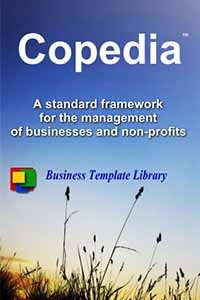 Accounting for Assets | Policy Template
Accounting for Assets | Policy Template
Accounting Policy Template
Accounting for Assets
Purpose
This policy establishes the fundamental guidelines and practices for properly accounting and reporting assets on the Company’s Balance Sheet. An asset is an element of the financial statements constituting economic resources as of a certain date, and expected to benefit future operations i.e. land, buildings, work-in-process, inventory, and receivables.
Assets are recorded on the Company’s Balance Sheet using the accrual basis of accounting. Increases in Assets are recorded as debits.
Assets represent items of value that the Company owns or controls. Assets have three primary characteristics:
They are an economic resource expected to provide future benefits to the Business.
The Company will obtain that benefit and maintain control over the asset.
The event giving rise to the Company’s right to control of the asset has already occurred.
The company maintains a series of internal control checklists which help protect company assets. Persons reviewing this document should also review the internal control checklists.
Division of Duties
The person responsible for recording fixed assets does not make general ledger entries
The reconciliation of the Fixed Asset detail accounts with the fixed asset control accounts and making entries into the fixed asset software are separate
The custodian of the fixed assets and the taking of physical inventory are separate
The person responsible for tagging fixed assets is not the fixed asset custodian
The person responsible for locating missing fixed assets is not the fixed asset custodian
Capital asset purchases require authorization
Asset disposals require authorization
Responsibilities
The Controller or designee is designated as the Fixed Asset System Coordinator and is responsible for ensuring:
Administration and maintenance of the asset and property accountability and control system
The designation of custodial areas and Property Custodians for each asset group
That Property Custodians have current records of the property for which they are responsible
That the designated Property Custodians are responsible for maintaining current custodial records for all in-use fixed assets within their assigned Custodial area
Developing systems which assure that assets are given proper care and protection and are used for official business purposes only
Property Custodians are responsible for:
Notifying the Controller whenever fixed assets are acquired lost, destroyed, stolen or disposed of
Identifying and reporting to management any property which is useable but not needed, or which should be disposed of
Assisting in taking physical inventories
Individual employees are responsible for:
The proper use, care and protection of company property
Ensuring that company property is used only for the conduct of official company business
Reporting any suspected fraud, theft, or embezzlement
Asset Categorization
Assets are classified into three groups:
Current Assets
Long term Assets
Other Assets
Assets are further organized on the Company’s Balance Sheet in descending order of liquidity.
Tagging
Positive identification of Company fixed assets requires the use of a tagging system.
Capitalization Policy
The Company will capitalize assets which have an expected useful life of more than one year and a value of $1,000.00 or more. Exceptions to this include certain office equipment.
Expenditures on assets must be capitalized (amounts added to the carrying amount of the asset) when it improves the ...
Get the rest of the template when you Buy Now